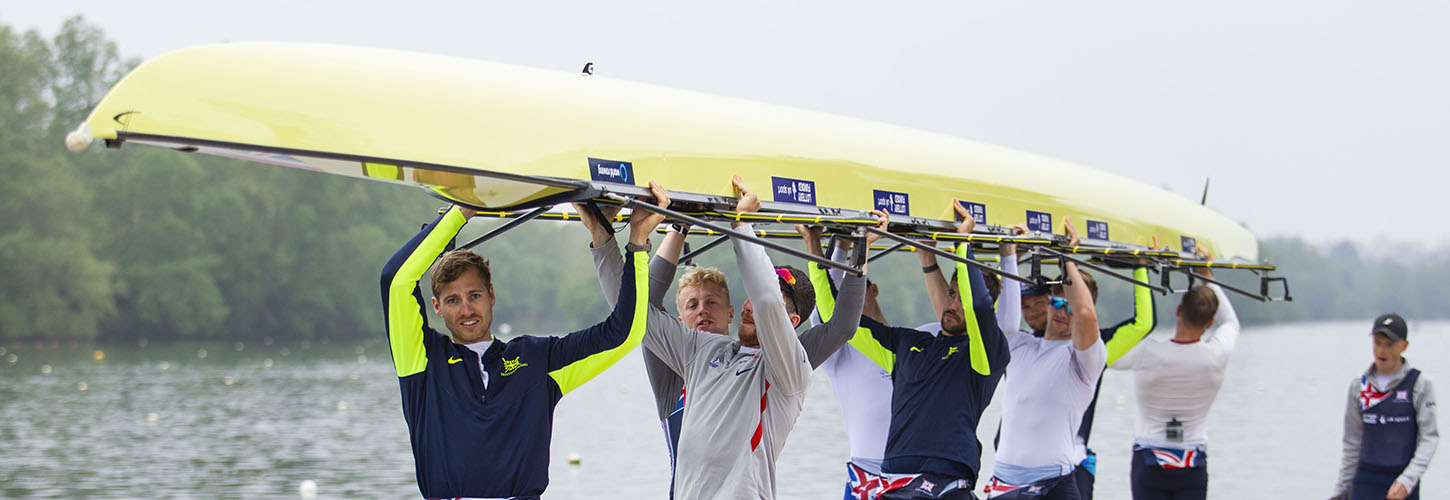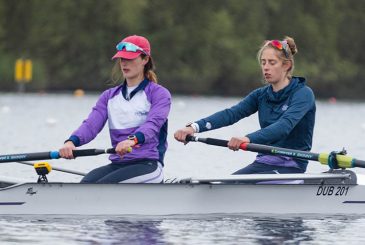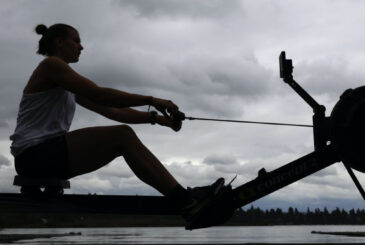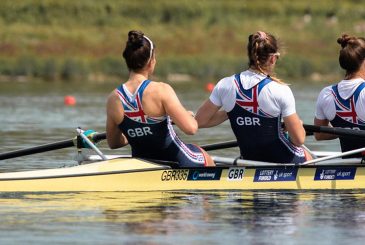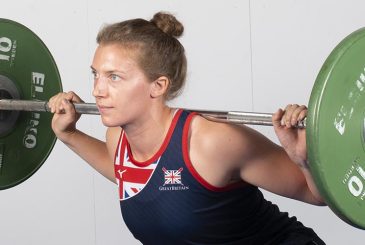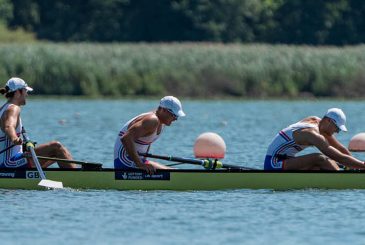Successful rowing programmes blend the underlying principles of rowing training with the specific circumstances of an individual club or athlete. These might include academic pressures, availability to train, gym usage or even the stretch of water you have. But what does this mean in practice?
This is the first article in a series outlining the key elements to incorporate when designing an elite rowing training programme. Written by Dan Moore, Olympic High Performance Coach, the series draws on published research and GB Rowing Team practices, to provide club coaches with the tools they need to create optimal plans for their athletes’ situations
In this article Dan uncovers some of the physiological factors before moving on to other topics in later articles, such as use of training camps and training intensity distribution.
Training volume
Rowing is predominantly an endurance sport. It therefore has training characteristics similar to middle- and long-distance running, endurance cycling and cross-country skiing. That said, rowing generally has a much shorter race duration (e.g. a 5:20-7:00 minute 2km race or even a 20 minute head race vs running a marathon or competing in cycling road race).
Total annual training volume is a worthwhile starting point.
Elite rowers typically train around 700-900 hours a year, while the 2008 Olympic champion single scullers Olaf Tufte1 and Rumyana Neykova2 reporting an annual training volume of over 1,000 hours. This equates to approximately 15-20 hours a week or two and a half to three hours a day for a typical six-day training week.
Total annual training volume is a worthwhile starting point. Establish how much time you can actually train and perhaps more importantly how much time you can’t train, and then plan your sessions accordingly.
Super-compensation
Alongside the maximum volume of training you can fit into a week or season, you need to to stimulate super-compensation to improve fitness. Super-compensation is the act of stressing the body above previous capacity and then recovering to adapt to a new level. Therefore training volume should fluctuate if you want to see physiological improvements such as improved lactate thresholds or maximum aerobic capacity (VO2max).
A moderate amount of training coupled with high life stress periods, such as exams, would count as high load on the athlete
The GB Rowing Team uses training camps to increase volume. These allow the increase to be managed safely because life stress is minimised while nutritional requirements and rest are optimised. During these camps, 30+ hour training weeks are common.
For super-compensation to work, however, you need to plan periods of recovery after the greater stressed periods. These can be lower volume weeks, days off or complete rest in an off-season break. Remember that a moderate amount of training coupled with high life stress periods, such as exams, would count as high load on the athlete and therefore ample recovery is required to bounce back.
The high and low volume periods should fit around the circumstances of your training programme. If you’re a school or university then use the holidays, if you’re a club then plan around work commitments, weekends and bank holidays.
Aerobic vs anaerobic
Elite rowing racing has both aerobic and anaerobic energy contributions. This guides the training that rowers perform (and the food they eat). Various research studies3 have measured the relative contributions of each in 2km rowing and they typically find that 70-80% of energy comes from aerobic pathways and 20-30% from anaerobic.
The underlying physiological mechanisms of aerobic training take years to develop
The anaerobic energy usage comes predominantly in the first stage of the race with the large power requirements needed to overcome drag from a static start.
Elite rowing training programmes typically prioritise the aerobic training component, not least as the underlying physiological mechanisms (mitochondrial biogenesis, capillarization) take years to develop. If your main focus is a long-distance race (e.g. the Boat Race) or a sprint rather than a 2km event, then you should consider and adjust the volume of strength and sprint based work in your programme accordingly. For example, reduce the amount of sprint training training if your focus is a long distance race and increase for shorter events. You should also reduce the amount of weight training if you’re using it for max strength reasons opposed to mainly injury prevention. This can be done through either removing weights sessions or reducing the load (reduction in the number of repetitions and/or weight lifted)”

Training intensity distribution (TID)
TID is a popular field in the academic world. It attempts to quantify and therefore compare how elite athletes train in different sports. This series will devote an entire article to it, but it is worth introducing it here.
Endurance athletes in most sports complete over 80% of their training at low intensity
The breakdown of endurance training can be put into Training Zones. Different countries and sports have their own ‘models’ for this depending on what works for them. In Norway there is a common 5-zone model4 across all sports whereas rowing has typically used the 7-zone model (UT3, UT2, UT1, AT, TR, AC, AP) originating in East Germany that we have all come to know.
The models overlap at the thresholds that have been traditionally referred to as aerobic and anaerobic. That is when the body is working mostly aerobically (low intensity), or mostly anaerobically (high intensity), or between the two thresholds (moderate intensity). As touched on in the ‘aerobic vs anaerobic’ section above, this is the area that training programmes can adjust the most. Endurance athletes in most sports complete over 80% of their training at low intensity5.
Specific vs non-specific
Specific training is rowing on-water or on an indoor rowing machine, whereas non-specific includes circuits, weights or running.
Non-specific training can support fitness development alongside rowing very efficiently, especially if there are injury or technical considerations. However, be aware that there’s evidence that VO2max can be sport specific6 and therefore you must complete a certain amount of rowing training.
This is why the GB Rowing Team camps in the winter are predominantly land based and then move to water in the spring/summer months. You, too, may want to consider moving the ratio of non-specific to specific training throughout the season.
Endurance vs strength
As rowing is a power-endurance sport (albeit with anaerobic contributions, such as the racing start), you need to consider the balance of strength vs endurance training in your programme. A good starting point is the previously stated balance of aerobic vs anaerobic in 2km racing; this suggests that 20-30% training time could be spent in the gym.
Strength training is also very important in conditioning and injury prevention. A unique component of rowing is that every stroke has a force production element (albeit at a low level) and there is an argument that this provides some of the strength training required for rowers. The ‘Kiwi pair‘ famously completed no strength training at all7 in their 2016 campaign!
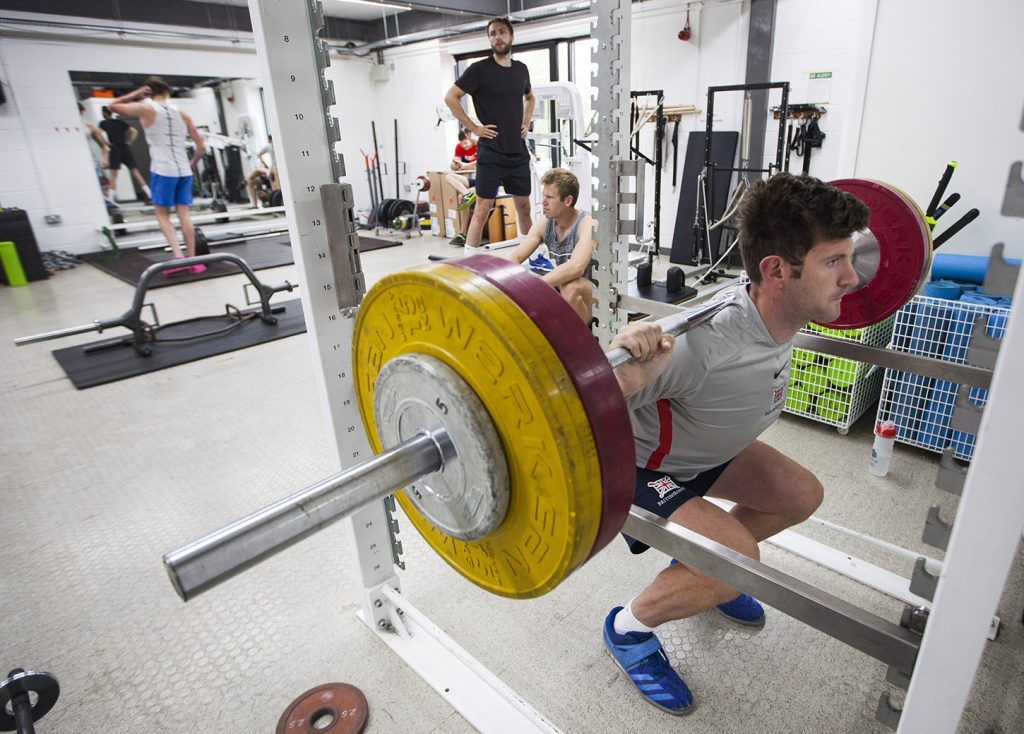
Conclusion
Starting with a season planner and understanding how these concepts will be achieved within your club’s environment is key to the long-term development of vital endurance capacity in elite rowers.
The next article in this series of six looks into how to schedule training intensity distribution in your programme most effectively.
References
- Seiler, Stephen and Tønnessen, Espen, (2009). Intervals, Thresholds, and Long Slow Distance: the Role of Intensity and Duration in Endurance Training, Sportscience 13, 32-53 (sportsci.org/2009/ss.htm)
- Load optimization in training the olympic rowing (Skiff) champion from Beijing, 2008: Case study, Serbian Journal of Sports Sciences, 2001.2. https://www.sjss.sportsacademy.edu.rs/archive/details/full/load-optimization-in-training-the-olympic-rowing-skiff-champion-from-beijing-2008-case-study-180.html
- Mäestu, J, Jürimäe, J and Jürimäe, T Monitoring of Performance and Training in Rowing. Sports Med 35, 597–617 (2005). /10.2165/00007256-200535070-00005.
- Seiler, Stephen. (2010). What is Best Practice for Training Intensity and Duration Distribution in Endurance Athletes?. International journal of sports physiology and performance. 5. 276-91. 10.1123/ijspp.5.3.276.
- Stöggl TL and Sperlich B (2015) The training intensity distribution among well-trained and elite endurance athletes. Front. Physiol. 6:295. /10.3389/fphys.2015.00295.
- Tanaka H. Effects of cross-training. Transfer of training effects on VO2max between cycling, running and swimming. Sports Med. 1994 Nov;18(5):330-9. /10.2165/00007256-199418050-00005. PMID: 7871294.
- Plews, Daniel and Laursen, Paul. (2017). Training Intensity Distribution Over a Four-Year Cycle in Olympic Champion Rowers: Different Roads Lead to Rio. International Journal of Sports Physiology and Performance. 1-24. 10.1123/ijspp.2017-0343.
What do YOU want to read about on British Rowing Plus?
What do you find interesting here on British Rowing Plus that you’d like more of? What haven’t we covered yet that you’d like to read about?
Let us know by emailing [email protected]


